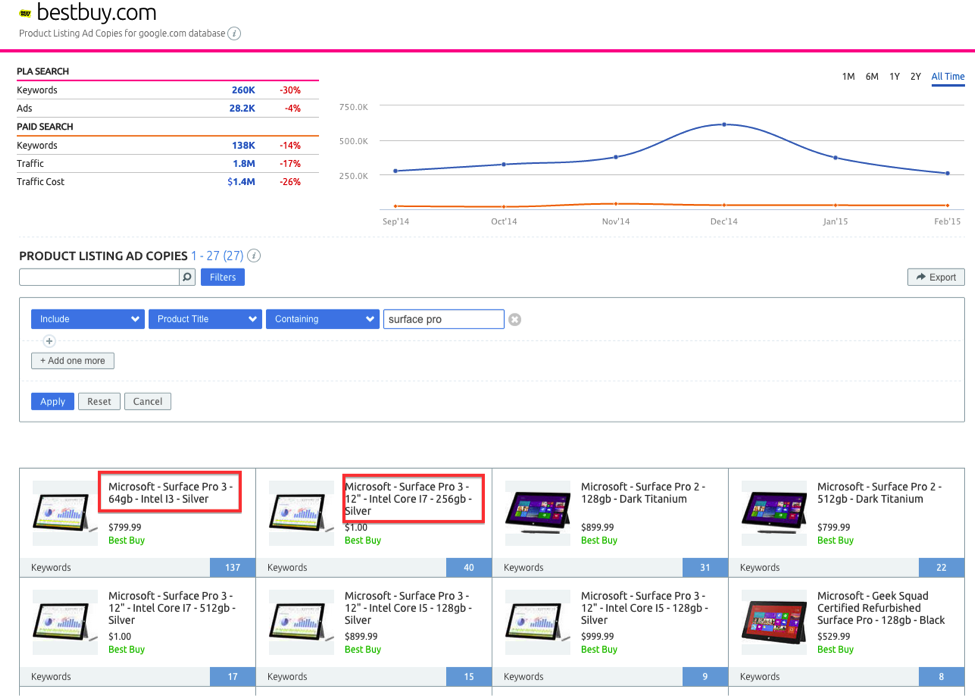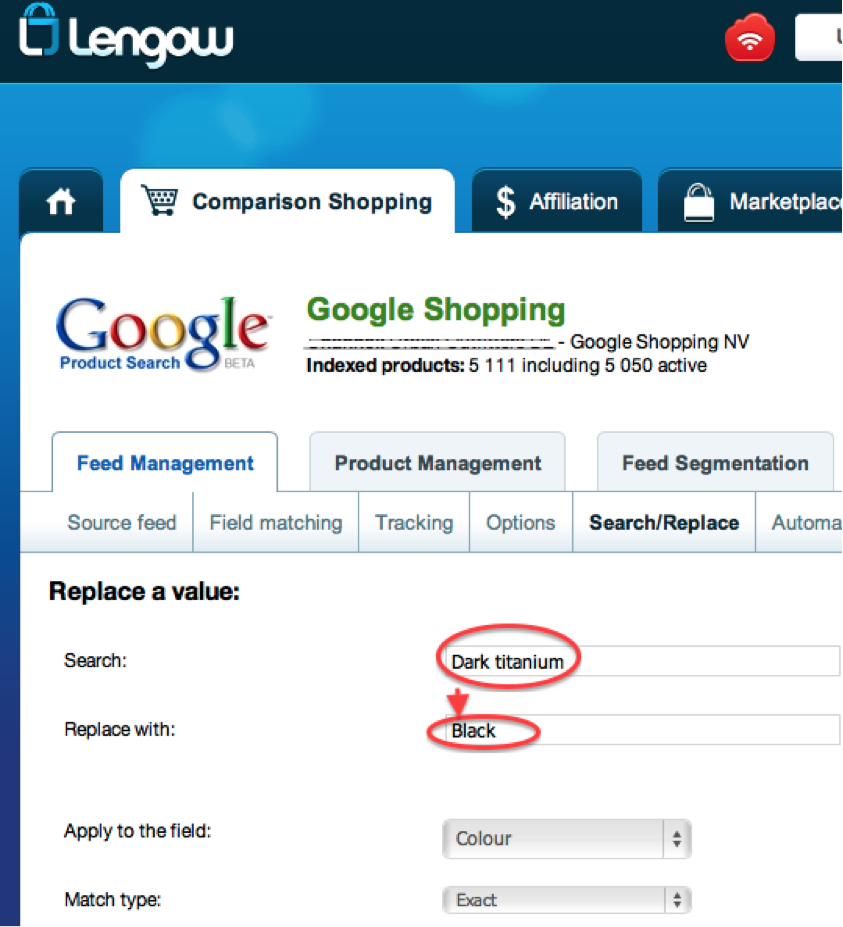Want to make it to the top of Google Shopping search results so that shoppers actually find your products instead of those sold by your competitors? Then try this hack with Semrush, Lengow and AdWords.
In four simple steps, you can make sure to maximize your product listings on Google Shopping
1. Focus on (and exclude) specific keywords
If you want to open the door to more sales, you need to key in on the right words…pun intended.
So for example, if you want to stand out from the crowd of merchants selling various version of Microsoft’s Surface, you need to be specific (write Surface Pro 3 to avoid people who are searching for Surface RT; reaching your target audience is critical).
Don’t want your product to be a needle in a haystack? Use Semrush to find out which keywords count.
See the Phrase Match Report and Related Keywords Report below to see an example of Semrush’s reporting on the volume of searches for keywords. You can notice that more people search for “Surface Pro 3” than “Microsoft Surface,” so you should highly consider avoiding unnecessary mentions of brand names in cases like this.
You can also see which negative keywords to use thanks to Semrush’s top-notch analysis (find out more on this topic later on in section 4 of this post).
2. Use Semrush to see what keywords your competitors use
Using Semrush’s excellent features will reveal how other merchants describe their products.

Make sure to regularly keep track of the keywords they use in their product titles and descriptions.
Tip: use Semrush’s filters to key in on the right words...again, pun definitely intended.
After you have done your SEO audit with Semrush, you can use Lengow to optimize your titles.
3. Use Lengow to optimize your listing
One important aspect of marketing your product will be fine-tuning the titles you use to describe them so that they are as accurate as possible.
Let's say you want to sell the aforementioned Surface.
You need to re-write a mediocre title like "Surface Pro 3, with Intel and Stylus” using Lengow so that shoppers will find it faster.
To make it more appealing and searchable, include details using data available in other fields from your product feed (like the Surface’s color, memory size [i.e. 64 GB] and screen size). Be very precise.

Remember Google’s own advice about how they designed their platforms for users. Put yourself in the shoes of people searching for products: use keywords that the average person types.
Example: Even if Microsoft’s official name for one of the colors of its Surface is “Dark Titanium,” you need to use the keyword “black” because most shoppers search for it.

To sum it up, you can make a change like the one below to increase your chances of selling.
Before: “Microsoft Surface Pro 3 Intel with Pen”
After: “Surface Pro 3, Black, 64GB, 12” by Microsoft”
4. Use AdWords to write negative keywords
To finish the job, you need to use negative keywords in AdWords to have even more pin-point accuracy with your listing. Negative keywords are defined on the Semrush Blog as “any search term that enables you to filter your target audience on search engines.”
For example: set RT, Surface 2 and Surface Pro 2 as negative keywords so that people looking for the Surface Pro 3 will find you.
Want to discover best practices for getting the most out of Google Shopping?
Download Lengow’s Google Shopping whitepaper now!
Innovative SEO services
SEO is a patience game; no secret there. We`ll work with you to develop a Search strategy focused on producing increased traffic rankings in as early as 3-months.
A proven Allinclusive. SEO services for measuring, executing, and optimizing for Search Engine success. We say what we do and do what we say.
Our company as Semrush Agency Partner has designed a search engine optimization service that is both ethical and result-driven. We use the latest tools, strategies, and trends to help you move up in the search engines for the right keywords to get noticed by the right audience.
Today, you can schedule a Discovery call with us about your company needs.
Source:




![How To Create a Strategic Dashboard in Excel Using Semrush Data [Excel Template Included]](https://new.allinclusive.agency/uploads/images/how-to-create-a-strategic-dashboard-in-excel-using-semrush-data-excel-template-included.svg)
